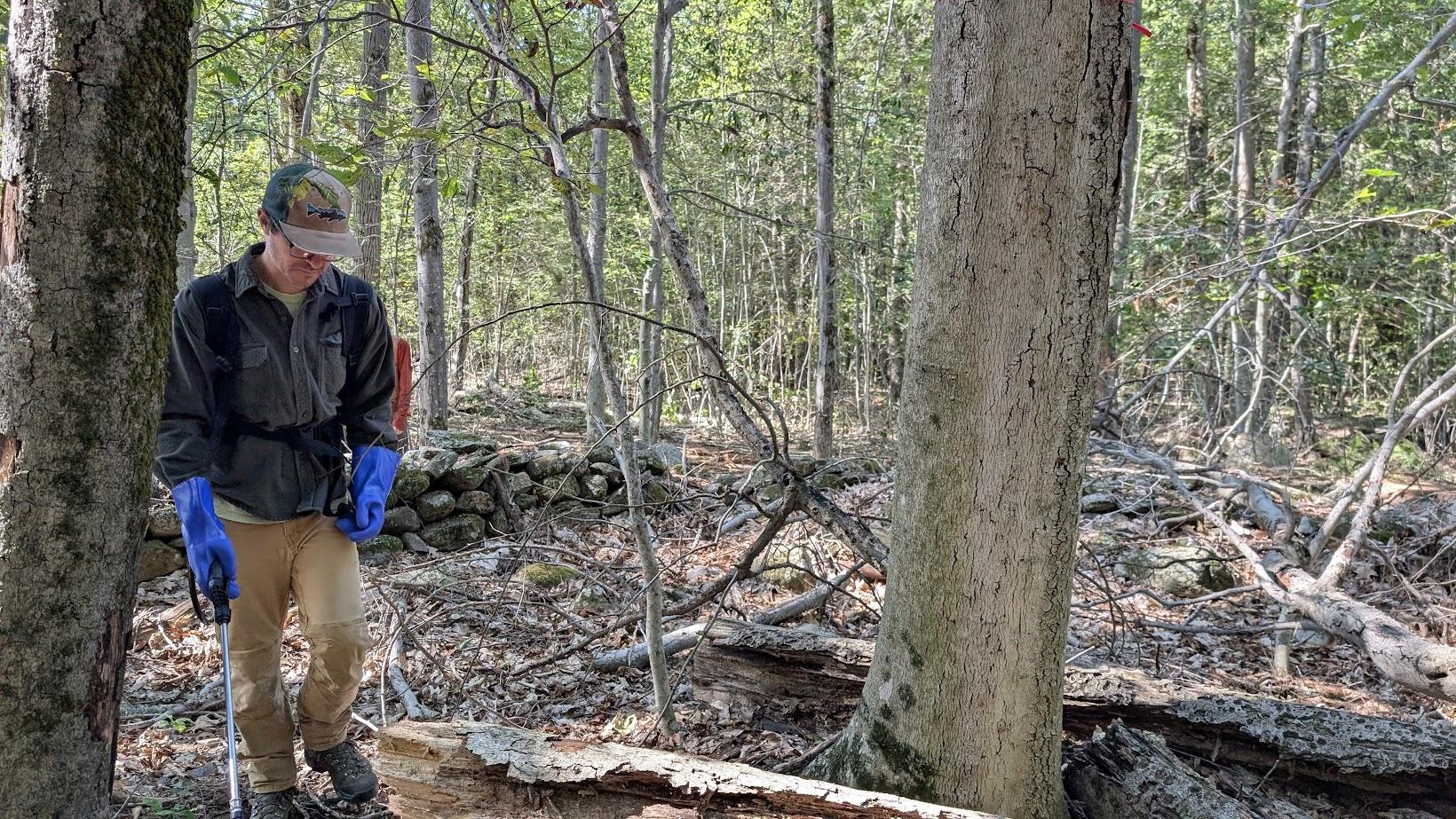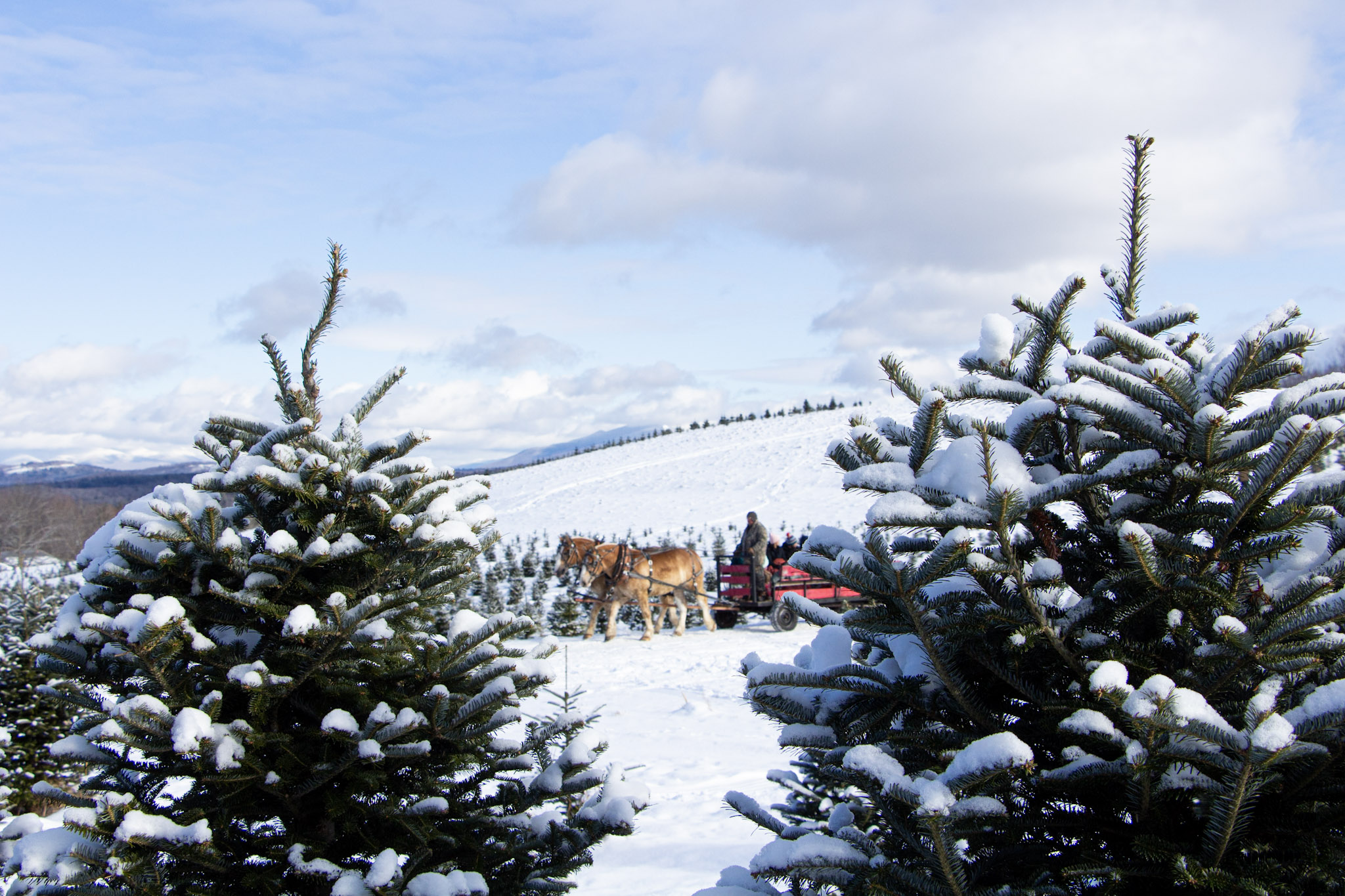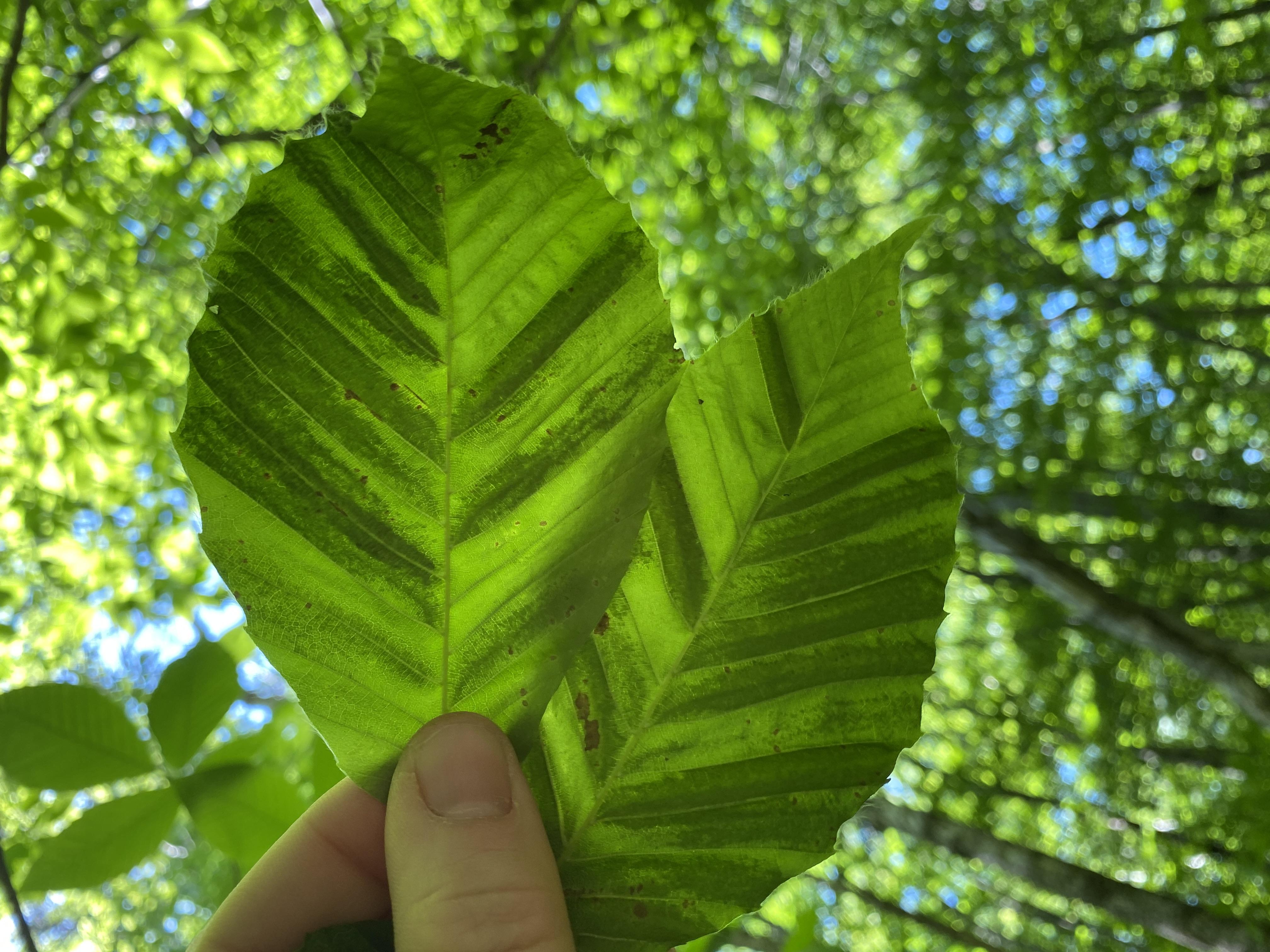Walk through a hardwood forest in southern New Hampshire this year, and you may notice something unusual. Instead of their usual lush green canopy, some American beech trees look a bit weary — their leaves crumpled, marked with dark banding, or tinged with brown.
The cause is beech leaf disease (BLD), a relatively new challenge that scientists and foresters are working hard to understand.
Beech leaf disease was first identified in the state in 2022. It is caused by microscopic roundworms called nematodes that burrow into buds and feast during the winter, interfering with photosynthesis once the leaf sprouts. That disruption can stress young beeches and reduce the vigor of older trees.
The disease has now been detected in 15 states, but its spread in New Hampshire has been slower and more uneven than experts first feared. This year, new cases were largely concentrated along the southern edge of the White Mountains, while trees north of the notches have not yet seen widespread impacts.
Beeches have shown resilience before. For decades, they’ve contended with beech bark disease, which affects many mature trees but hasn’t prevented new seedlings from regenerating. Beech leaf disease is different in that it can kill trees of all ages over the course of a few years, yet much remains unknown about how it will play out across the landscape.
In Ohio, where BLD was first discovered in 2012, about 30% of beeches have already died — nearly all saplings and younger trees, while many larger, mature trees continue to hang on. Researchers at the Holden Arboretum are studying these so-called “lingering beech” in hopes of finding genetic resistance that could shape the future of the species (you can learn more at https://holdenfg.org/beech-leaf-disease/).
Drought conditions add another layer of stress, but foresters are also watching closely for signs of adaptation and variation in how different stands respond.
What’s certain is that beech trees remain a cornerstone of New Hampshire’s forests.
Their nuts are a crucial food source for bears, deer, turkeys, and countless small mammals and birds. Their smooth gray trunks define the look of many woodlots and hiking trails. Losing them would leave a hole in the ecological fabric of the Granite State.
Scientists and land managers are continuing to learn more. At present, there is no large-scale treatment for beech leaf disease. The Division of Forests and Lands, Forest Health Bureau is testing the efficacy of applying a fungicide to the bark of declining trees; three Forest Society properties have been set up with control and treatment areas to test this new method.

This treatment works through building up phosphites in the foliage, making them undesirable to the nematode. While this treatment may not be applicable on a landscape scale, it’s possible that specific groves of beech around the state can be protected with this method.
Recognizing beech leaf disease is simple — look for the tell-tale dark banding between the leaf veins. To see if beech leaf disease has already been found in your town or to report the disease in a new town, visit NHBugs.com; this will help pathologists understand the spread of the disease.
For now, what we know is that our forests are always changing. Some species decline, others take their place, and still others adapt in surprising ways. As with the chestnut blight to the loss of white ash to the emerald ash borer, the rise of beech leaf disease reminds us of how interconnected our forests are — and how important it is to pay attention.
The Forest Society will continue to monitor the health of beeches across our lands and work with partners to share new information as it emerges. In the meantime, the next time you walk past a stand of beeches, pause to appreciate them: their golden leaves catching autumn light, their bark etched with a century of initials, their nuts feeding the hidden life of the forest floor. These trees have long given generously to New Hampshire’s people and wildlife alike. We owe it to them to notice, to care, and to act where we can.

